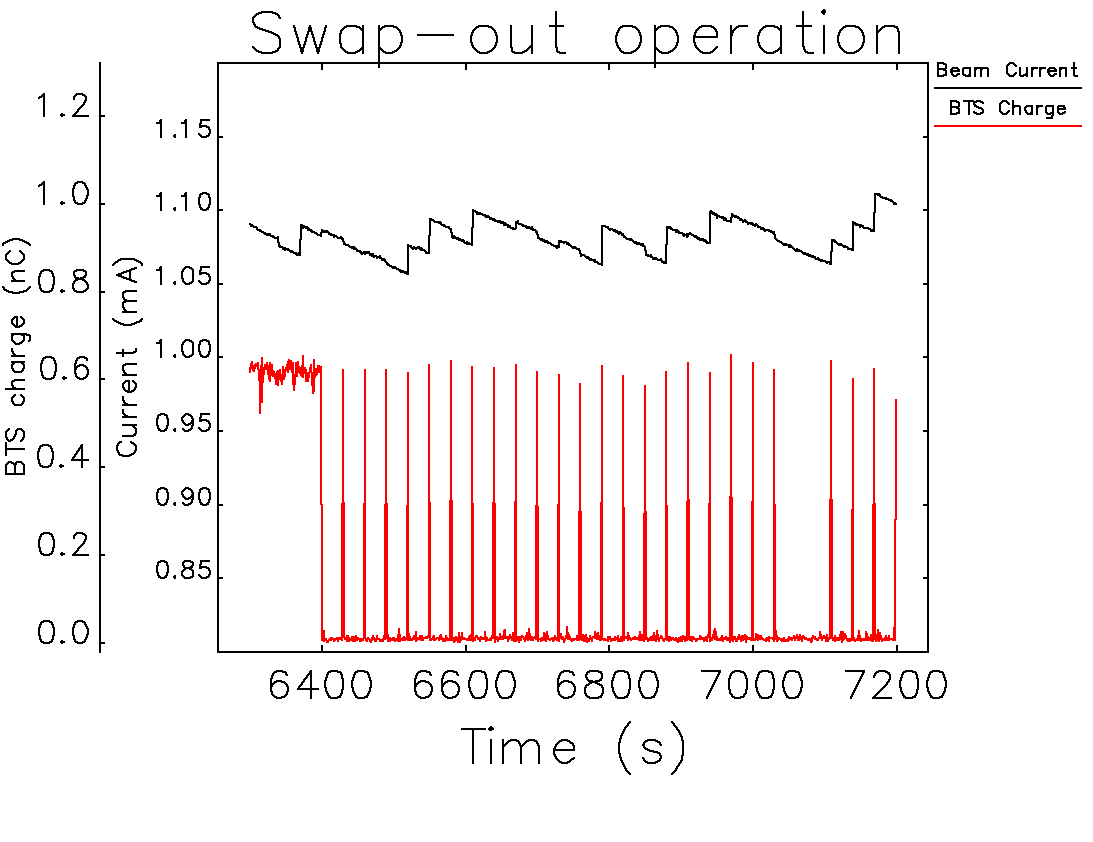
The upgraded Advanced Photon Source (APS), a U.S. Department of Energy Office of Science user facility located at Argonne National Laboratory, is now the world’s first synchrotron light source to use a multi-bunch swap-out method of replenishing the electron beam in its storage ring.
On April 29, 2024, Argonne’s Accelerator Systems Division (ASD) team successfully demonstrated multi-bunch swap-out injection of a stored beam of electrons. Regular injections into the ring are required because electron beams have a limited lifetime. Electrons scatter as they circulate, and eventually the beam is depleted and must be replenished. In the late 1990s, the APS pioneered top-up injection, which provides nearly constant stored beam current to X-ray experiments by “topping up” electron bunches that have lost electrons. This has become a standard operation mode for light sources worldwide.
Due to very strong non-linear focusing fields in the new APS, top-up injection is no longer possible. Instead, bunches of electrons will be injected directly onto the nominal stored-beam trajectory, completely replacing the stored bunches. This “swap-out” mode uses fast kicker magnets to extract and dump the stored bunch while bringing the injected beam from injectors and placing it in the stored bunch’s place, all in a span of a few nanoseconds. The process will repeat every few dozens of seconds to keep the beam current constant.
“While swap-out injection is conceptually a simpler process than top-up injection, it requires much faster kicker magnets for multi-bunch operation. That’s why it has never been used in modern light sources before,” said Michael Borland, associate director of ASD. “The successful demonstration of swap-out injection at the APS is the result of years of planning and work by our dedicated team of experts. It’s nice to see that once again the APS is leading the way.”
Commissioning of the storage ring will continue for several more weeks. The next step in the process is first light – delivering photons to a beamline for the first time – which will signal the start of a new era of scientific discovery at the APS.
